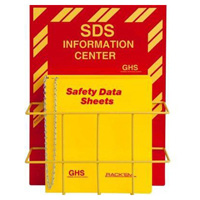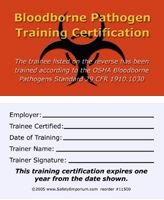| The Home page of ILPI's Safety Data Sheet (SDS) Resource, the leader in SDS information since 1995! | |
| The history and philosophy behind this resource. | |
| A curated collection of books and reference materials concerning Safety Data Sheets and closely related topics. | |
| Paste your plain text SDS into the SDS-Demystifier, and it will be converted into a hypertext-enriched document with links to detailed explanations of each key term. | |
| An extensive list of frequently asked questions about Safety Data Sheets including regulations, content, compliance, and more. | |
| A humorous take on Safety Data Sheet jargon. Fill in the blanks on our entry form to generate a personalized Unsafety Data Sheet to share with your coworkers. | |
| Since 1995, we've maintained this massive curated list of the best places to find Safety Data Sheets on the Internet. | |
| You are here! Way more than a glossary, this hypertext-enhanced resource covers hundreds of SDS-related terms and expert knowledge. Each entry includes both the SDS relevance and links to additional authoritative resources. | |
| Archived results of Safety Data Sheet related polls taken by some of our millions of site visitors | |
| The OSHA regulations behind SDS regulations, including the inspection guidelines and over 400 official interpretations letters under the Hazard Communication Standard | |
| Commercial suppliers of SDS authoring and management software as well as cloud compliance services. | |
| Commercial companies that will create SDS's for your specific needs as well as SDS translation companies. |

Safety signs, banners, and scoreboards? Get yours at Safety Emporium!
Definition
mus is the RTECS abbreviation for mouse. On some Safety Data Sheets , the abbreviation m may also be used.
mus is not a standard abbreviation for "muscle" or "muscular". For example. RTECS uses ims for "intramuscular".
Additional Info
mus appears on SDS's in the context of a lethal or toxic dose concentration. Examples of such concentrations include LD50 and LC50 values as well as related terms such as TDLo (toxic dose, low), LDLo (lethal dose, low), and LCLo (lethal concentration, low).

Your employees can stay informed and comply with OSHA regulations with SDS information stations and compliance products from Safety Emporium.
In the following examples from actual SDS's, "mg/kg" refers to the specified quantity (in g or mg) of the test chemical per kilogram (kg) of animal body weight:
7,548 mg/kg (inhalation, mus)
ORL-MUS 4 mg kg-1
LD50:(IMS,MUS) 1190 MG
In the examples above, ORL-MUS above refers to an oral exposure route in mice and (IMS,MUS) refers to intramuscular injection in mice.
It is sometimes difficult to assess the relative risks of chemicals when one LD50 is given for inhalation and another is given for injection. One has to consider the plausible routes of entry. For example, exposure to a vapor is much more likely through inhalation than through ingestion or injection.
SDS Relevance
Animal test results do not always accurately assess the risks to humans, but even so, they have historically been quite valuable for assessing the relative risks of chemicals in the workplace. The lower the LD50 or related value, the more toxic the material. Animal testing raises ethical issues, particularly for non-essential applications like cosmetics. For perspectives on animal testing and biomedical research see Further Reading (below).
Always read your SDS to assess the hazards of a substance. Section 11 (toxicological information) will tell you what hazards you face and Section 8 (exposure controls/personal protection) will describe whatever engineering controls or personal protective equipment may be necessary to protect you from workplace exposure.

Get your bloodborne pathogen safety materials from Safety Emporium.
Further Reading
- Guide for the Care and Use of Laboratory Animals at National Academies Press.
- The Animal-Free Safety Assessment Collaboration provides resources for non-animal chemical assessment methods.
- The Johns Hopkins Center For Alternatives To Animal Testing.
- The Flaws and Human Harms of Animal Experimentation from Camb Q Healthc Ethics 2015, 24(4), pp 407-419.
- Animal Experiments in Biomedical Research: A Historical Perspective, a review article in Animals (Basel) 2013, 3(1), pp 238-273.
- Ethics guide: Experimenting on animals at the BBC.
See also: intraperitoneal, intravenous, molality, subcutaneous.